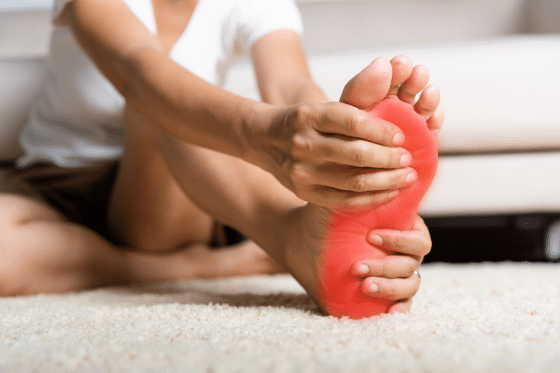At Foot Focus Podiatry, we meet people every week who are dealing with nerve-related foot discomfort. Whether it’s tingling, burning, or a strange numbness that just won’t go away, these sensations can seriously impact your confidence when walking, standing, or doing the things you enjoy. If you’ve been searching for practical advice on managing nerve discomfort in feet, this blog is for you.
Below, we’ve laid out five clear, manageable steps that can help improve your daily movement and bring some clarity to a condition that often goes misunderstood.
Step 1: Understand What Nerve Discomfort Actually Means
When people hear the word “neuropathy,” it can sound intimidating. But let’s break it down. Neuropathy simply means there’s been some change or disturbance in how the nerves are functioning. In the feet, this might feel like pins and needles, burning sensations, or a loss of feeling altogether.
Managing nerve discomfort in feet starts with understanding the root cause. In some cases, it’s linked to diabetes, but other times it might be due to poor circulation, compression of a nerve, or long-term pressure on the feet from standing or ill-fitting footwear. A proper assessment from a podiatrist can help determine the specific cause.
Step 2: Choose Footwear That Supports Your Nerves
One of the simplest (and often overlooked) ways of managing nerve discomfort in feet is through your choice of footwear. Shoes that are too tight, too flat, or offer little arch support can increase the pressure on nerves and worsen the sensation of discomfort.
We recommend choosing footwear with the following features:
- A cushioned sole for shock absorption
- A wide toe box to avoid pinching
- Arch support tailored to your foot type
- A secure but not restrictive fit
Remember, it’s not about the brand—it’s about the structure. And for some people, custom orthotics might be the missing link.
Step 3: Incorporate Daily Foot Movement
Movement really is medicine. And when it comes to managing nerve discomfort in feet, regular, gentle exercise can support better circulation and keep the nervous system engaged. We’re not talking about high-impact activities—something as simple as ankle circles, toe scrunches, or rolling your foot over a tennis ball can make a big difference.
Try starting your day with five minutes of foot-focused movement:
- Ankle circles: 10 rotations each way
- Toe lifts: Hold for 5 seconds, repeat 10 times
- Foot rolls: 1 minute per foot with a ball or roller
These activities help wake up the nerves and prepare the feet for daily movement.
Step 4: Use Sensory Stimulation Tools
One technique we use often in clinic is sensory re-education. That sounds technical, but it really means gently “retraining” your nerves to respond more normally to sensation.
This can be done at home with items you already have. For example:
- Rub your feet gently with a towel
- Use a soft brush to stimulate the skin
- Walk barefoot on different surfaces like carpet or grass
These actions can help the nerves become more responsive and reduce that “numb and tingly” sensation many people experience.
Consistency is key. Doing these activities just once won’t lead to lasting change—aim for daily repetition.
Step 5: Book a Professional Assessment
If you’ve been living with nerve discomfort in your feet for more than a few weeks, it’s worth having a proper assessment. Managing nerve discomfort in feet isn’t just about short-term fixes—it’s about understanding what’s contributing to the issue and creating a plan that works long term.
At Foot Focus Podiatry, we take a whole-body approach to foot care. We look at posture, walking patterns, footwear, and medical history to get a full picture of what might be driving your nerve discomfort. Once we know more, we can put together a tailored plan—whether that includes strengthening work, orthotics, manual therapies, or referrals to other professionals.
Final Thoughts
Managing nerve discomfort in feet doesn’t have to feel overwhelming. By taking small, consistent actions, it’s possible to regain movement, confidence, and control. We hope the tips above have given you a helpful starting point.
If anything we’ve mentioned resonates with you, or you’re still feeling unsure about what steps to take, our team is here to help.
Ready to take that first step?
Call (01) 556 3662 or click here to request a free call back and chat with a member of our team. No pressure, just answers.
More free resources:
Download our free foot pain report: Foot Pain Dublin, Foot Pain Finglas, Foot Pain Mount Merrion – Foot Focus Podiatry
Read our blog: Understanding Foot Neuropathy: What It Really Means
Find out what our clients are saying: Client Testimonials – Foot Focus Podiatry

